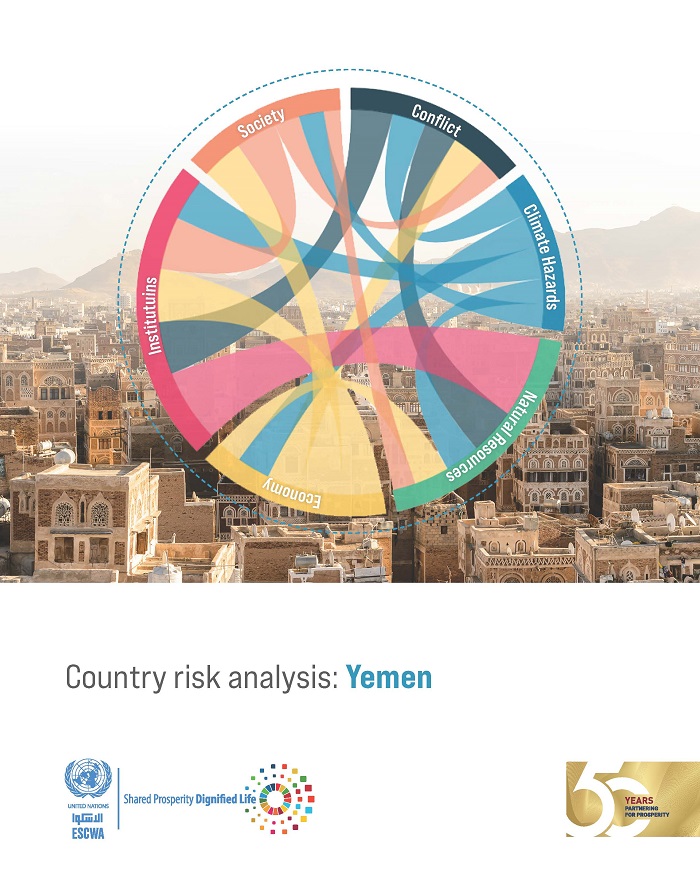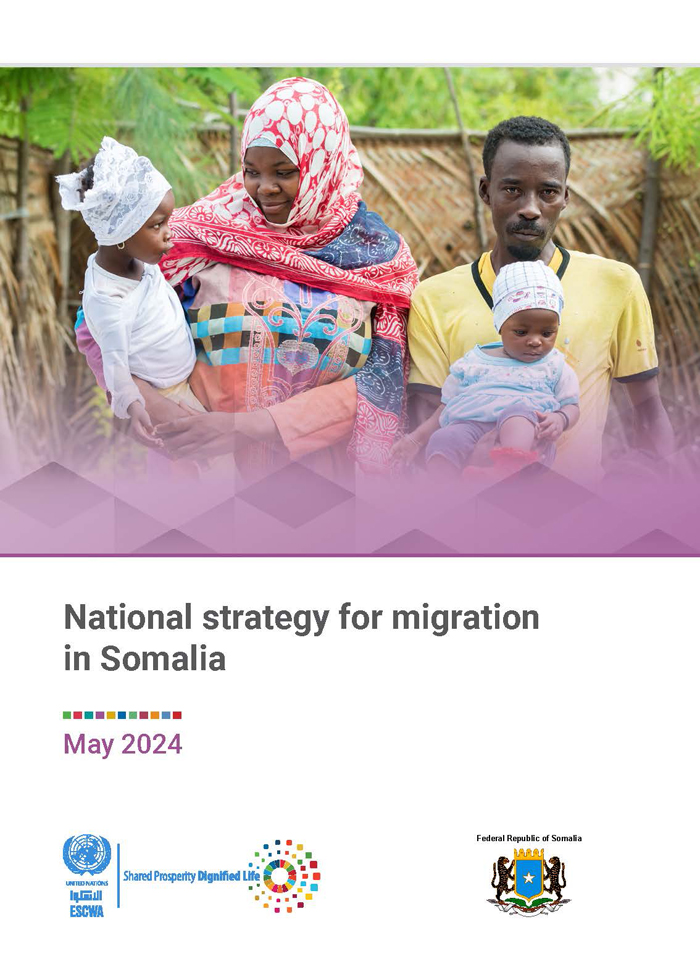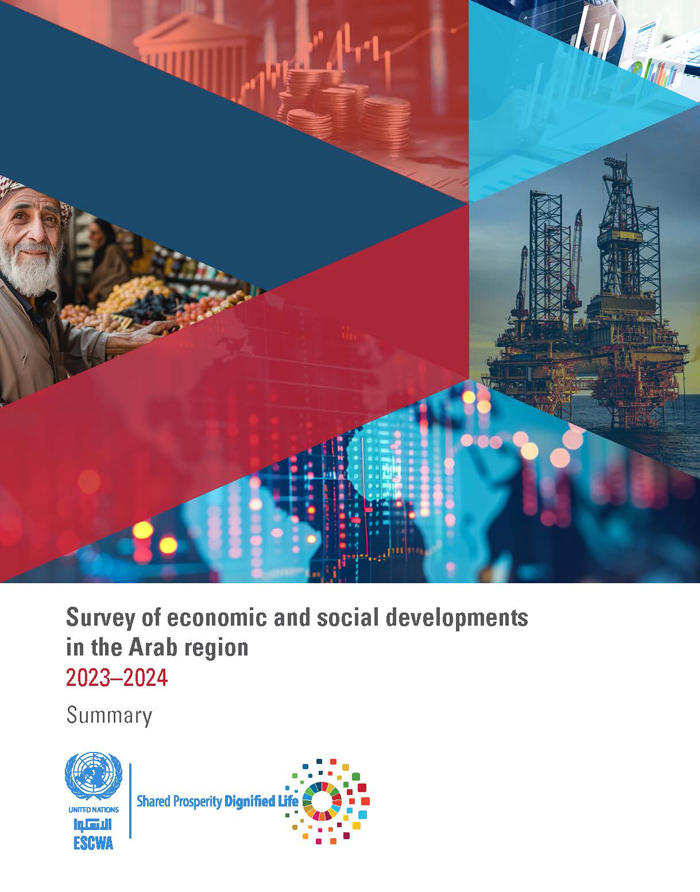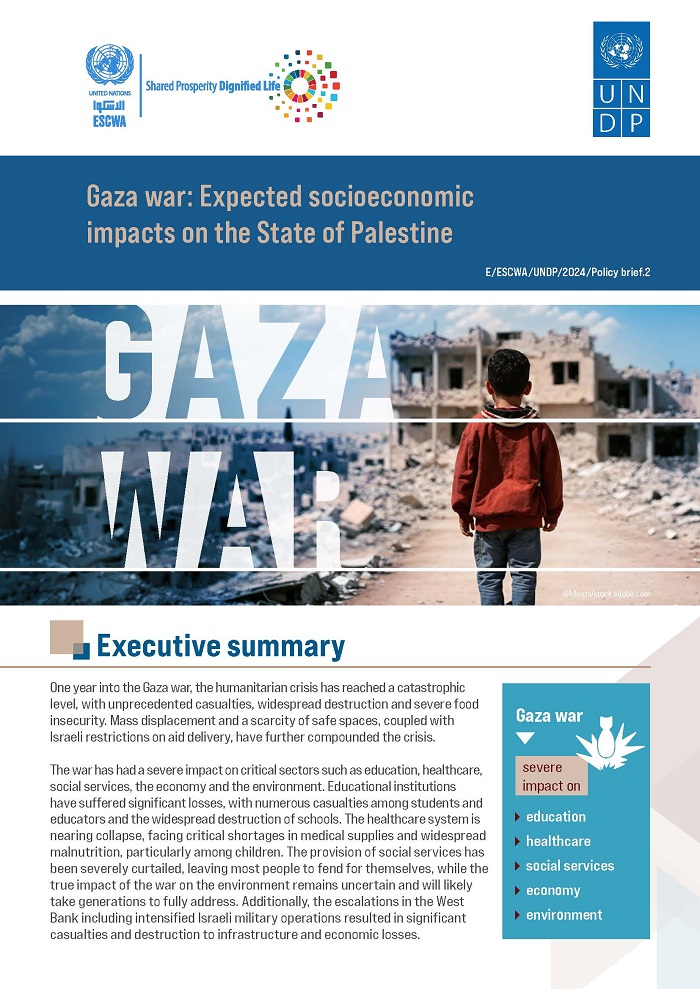
ESCWA Publication: E/ESCWA/CL6.GCP/2023/CP.2
Country: Republic of Yemen
Publication Type: Information material
Cluster: Governance and Conflict Prevention
Focus Area: Climate change, Debt and fiscal policy, Governance & enabling environment, Resilient development & conflict prevention
Initiatives: Promoting food and water security, Supporting Least Developed Countries, Development challenges, Public finance and inclusive fiscal policy
SDGs: Goal 6: Clean Water and Sanitation, Goal 16: Peace, Justice and Strong Institutions, Goal 17: Partnerships for the Goals
Keywords: Risk assessment, Development indicators, Corruption, Armed conflicts, Social security, Climate change, Sustainable development, Social aspects, Social security, Risk assessment, Natural resources, Economic aspects, Social aspects
Country risk analysis: Yemen
July 2023
Yemen, being one of the world’s least developed countries, faces a multitude of complex crises. The upheaval of the past decade, including the war and its aftermath, has exacerbated existing challenges while also creating new ones. This report presents an assessment of multiple risks in Yemen based on the ESCWA Arab Risk Monitor, which measures vulnerability and resilience to shocks in the Arab world, exploring the issues that shape risks of conflict, crisis and instability. The analysis reveals that weak institutions, combined with the ongoing turmoil, perpetuate a vicious cycle of instability in Yemen. Over the past decade, the country’s overall risk has increased, primarily driven by the devastating impacts of conflict. Its vulnerability is influenced by water scarcity, food insecurity and corruption. Insufficient social protection and ineffective governance are key obstacles to its capacity to build resilience. Yemen also saw a marked deterioration in terms of the climate hazard risk, driven by a tenfold increase in the human impact of natural disasters. However, it is slowly building resilience to climate hazards, largely as a result of increasing financial flows for climate adaptation. By observing and interpreting structural trends, the present risk assessment can serve to guide national and regional policymakers, development organizations and humanitarian actors who navigate increasingly complex dynamics, integrate risk analysis into policymaking and planning, and ultimately advance the Sustainable Development Goals.
Related content
Climate change
, Debt and fiscal policy
, Governance & enabling environment
, Resilient development & conflict prevention
,
Yemen, being one of the world’s least developed countries, faces a multitude of complex crises. The upheaval of the past decade, including the war and its aftermath, has exacerbated existing challenges while also creating new ones. This report presents an assessment of multiple risks in Yemen based on the ESCWA Arab Risk Monitor, which measures vulnerability and resilience to shocks in the Arab world, exploring the issues that shape risks of conflict, crisis and instability. The analysis reveals that weak institutions, combined with the ongoing turmoil, perpetuate a vicious cycle of instability in Yemen. Over the past decade, the country’s overall risk has increased, primarily driven by the devastating impacts of conflict. Its vulnerability is influenced by water scarcity, food insecurity and corruption. Insufficient social protection and ineffective governance are key obstacles to its capacity to build resilience. Yemen also saw a marked deterioration in terms of the climate hazard risk, driven by a tenfold increase in the human impact of natural disasters. However, it is slowly building resilience to climate hazards, largely as a result of increasing financial flows for climate adaptation. By observing and interpreting structural trends, the present risk assessment can serve to guide national and regional policymakers, development organizations and humanitarian actors who navigate increasingly complex dynamics, integrate risk analysis into policymaking and planning, and ultimately advance the Sustainable Development Goals.



